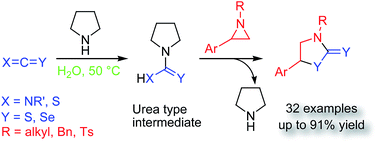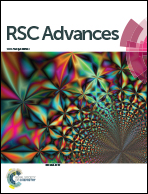Efficient pyrrolidine catalyzed cycloaddition of aziridines with isothiocyanates, isoselenocyanates and carbon disulfide “on water”†
Abstract
The cycloaddition of aziridines with isothiocyanates, isoselenocyanates and carbon disulfide has been described using pyrrolidine as catalyst on water at moderate temperature. This protocol features the use of commercial amine as catalyst and water as solvent affording a potential route for the construction of five membered heterocycles in high yields.


 Please wait while we load your content...
Please wait while we load your content...